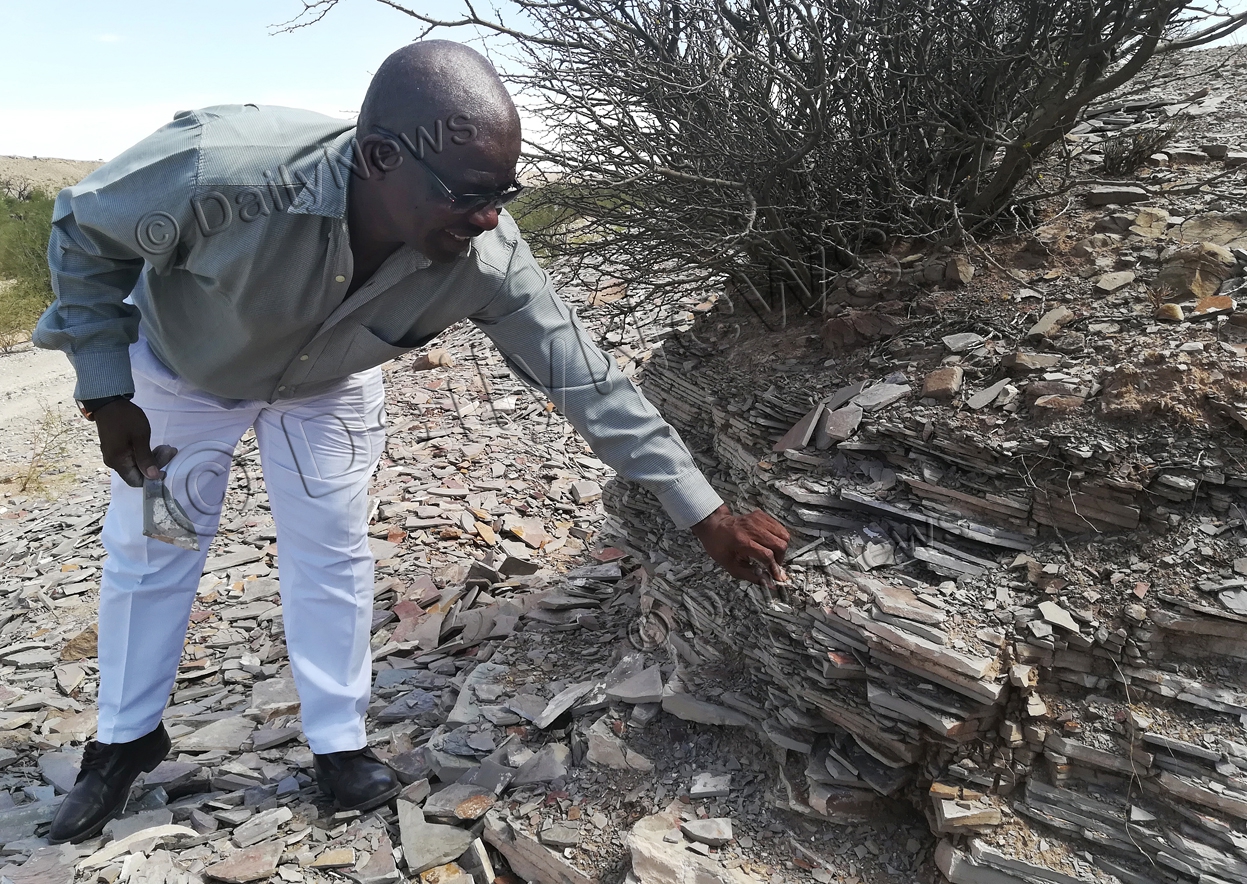Molopo River dormant but rich
08 Apr 2019
It is a warm, but windy morning as we enter the small and relatively quiet village of Khuis, which lies in the south western part of Botswana.
The village is widely spread on the fringes of the Botswana and South Africa border and sits firmly on the ever dry and majestic Molopo River tunnel that runs along the border.
The sparsely populated and small village sits in the Kalahari Desert, which stretches on the hardveld that covers 84 per cent of the entire country.
It is endowed with abundance of unexplored natural and mineral resources.
After noticing overly long dry spells on the giant river, which has now turned into fossil as water stream had over the years ceased to flow its direction, BOPA visited the village.
The sole purpose was to hear how the village authorities could make use of the river and if there were any mineral resources in the village and how they intended to tap into them to better the lives of the people.
Braving the wind and traversing the thick Kalahari sand, my feet occasionally sank into the creamy white sand as I scanned the largely flat landscape, which is sporadically interrupted by shallow gently descending valleys.
Its sand dunes vary in size and complexity.
It dawns on me that the village, which is sandwiched by Middlepits and Gakhibana villaqges, comes across as a fairly beautiful scenery of a countryside.
Occasionally the wind blows, as we make our way into the village kgotla, into the presence of the village authorities in Kgosi Bothata Botsheleng, Councillor Dick Kotokwe, grey haired village elders, some Village Development Committee (VDC) members and some members of the community cracking their heads in an attempt to explore ways of making use of mineral resources in their village to better livelihoods of the villagers.
From observation, the villagers have turned the dry Molopo tunnel on their side into a football field. “Khuis Primary School learners use this place to hold sports competitions.
We also use it to host constituency tournaments,” says Kgosi Botsheleng.
He says the river stopped flowing about 40 years ago and his village, which currently has about 1 500 people, is poverty stricken as evident from especially mostly mud residential structures.
Thus they intended to salvage the remains of the river and use mineral deposits from it to better their lives and to augment the available government programmes.
“We have discovered a tile stone in the Molopo River that we want to engage Ministry of Environment, Natural Resources Conservation and Tourism to apply for mining rights,” says Councillor Kotokwe.
Mr Kotokwe yearns for the villagers to be facilitated by relevant authorities to turn their tile stone discovery into a business, which can create employment opportunities for the people of Khuis and the surrounding villages.
He says Molopo River has left ample natural resources, which they could harness such as concrete stones, clay to be used for pottery and marble stones, which can be cut and polished for sale as ornaments.
The village elders took us to the tile stone minefield, where we witnessed that the tiles come in natural, earthy combination of hues and beautiful boasting irregular rough textures.
Some have powdered pink shades making them breathtakingly stunning.
Some come in lighter tones while others come in darker shades of grey and are as tough as a stone can be.
On the tile heap, they come in almost equal strata appearing as though the natural process carefully arranged them uniformly.
No history has been documented about the village, hence it became difficult to establish the ages.
When sharing the origins of the village, 98-year-old Mr Mosikare Golalwang confirmed that Molopo River dried about 40 years ago.
He said the village is home to Batlharo, who originated from Kuruman, South Africa.
The old man, who had lived under the British ccolonial rule, recalls that in 1948 they used to plough maize, beans and sorghum and sold them through bartering. The weather patterns changed over the years, the temperatures became too hot for ploughing and rains became less and less over the years, he said.
“Ha he sha thola he lema (We no longer plough)” he said in Shegkalagari, adding that they stopped a long time ago as the weather conditions no longer allowed crop farming.
A stone’s throw away from the football field in the middle of the Molopo River are two stone ruin kraals, which are said to have been used during the Scramble for Africa era by Adolf Hitler’s forces, which the villagers seek archeological evidence in profiling.
Another elder, Mr Tinkang Sentlabane also called for a museum and environment experts to come to their village and work with the Khuis Development Trust as the village is rich in natural resources worth exporing and exploiting
Professor Neil Parsons once wrote that the Molopo River and its Ramatlabama tributary, on the southern border of Botswana, with a course flowing into the Orange River, today rarely floods more than 50 miles (80km) from their sources.
He noted that most rivers in Botswana are merely ephemeral channels as they are usually not flowing above ground except in the summer rainy season.
“The two great exceptions to this rule are vigorous channels fed by the rains of central Africa - the Okavango River above its delta and the Chobe River flowing through its marshes along the northern border to join the Zambezi above the Victoria Falls,” he said. ENDS
Source : BOPA
Author : Calviniah Kgautlhe
Location : KHUIS
Event : Interview
Date : 08 Apr 2019






